Ubiquiti Lite AP GPS (LAP-GPS): Get Your Wireless Network in Sync in Kenya
Internet access is getting bigger and bigger in Kenya. Experts at the Kenya ICT Board say that by 2025, about 90% of the country will be online. With more people using the internet, there’s also a jump – around 50% more – in the number of high-density PTMP (Point-to-MultiPoint) setups.
So, what’s the big deal? Well, when you have lots of wireless devices close together, they can start interfering with each other. That’s where GPS synchronization comes in. It helps all the devices talk at the same time without stepping on each other’s toes, giving you better coverage and speed.
Enter the Ubiquiti Lite AP GPS, or LAP-GPS for short. You can grab one of these at Phonex Technologies for around KES 14,000. Basically, it’s a small, but powerful, 5GHz access point (that’s the thing that broadcasts the Wi-Fi signal). It uses something called airMAX AC tech to give you speeds of 450+ Mbps over distances of 10+ km. Plus, it has GPS built right in to keep everything running smoothly.
Think of it as the top dog in Ubiquiti’s LiteAP line when it comes to GPS-enabled PTMP stuff. Whether you’re trying to blanket farms in Nyeri with Wi-Fi, connect students on a Kisumu campus, or power an industrial area in Mombasa, the LAP-GPS can handle it. We’re talking about support for 100+ devices without any of that annoying co-channel interference (when different Wi-Fi signals overlap and slow things down).
People in Kenya are already searching online for Ubiquiti LAP-GPS Kenya and GPS sync PTMP AP price Nairobi like crazy – searches are up about 65% compared to last year! So, let’s break down what makes this thing special. We’ll cover how it uses GPS to keep everything in sync, why that’s important for big airMAX networks, and why it might just be the best 5GHz PTMP access point for Kenyan internet providers and anyone else needing to spread wireless access over a large area.
(Image: Ubiquiti LAP-GPS GPS-sync PTMP AP for Kenyan WISP 2025)
Imagine a LAP-GPS sitting high up on a tower in rural Kenya. It’s part of a setup with three sectors, all synced by GPS. Each sector covers about 90 degrees, and together they’re serving over 120 LiteBeam devices spread out over 10 km. Because of the GPS sync, there’s zero interference, bringing broadband to a whole village.
What the LAP-GPS Brings to the Table
The LAP-GPS is all about being small and using GPS to keep your PTMP network running smoothly. Here’s a more detailed look at what it can do. The numbers come straight from Ubiquiti, so you know they’re legit:
- Radio: Uses airMAX AC (802.11ac) for fast speeds (450+ Mbps). It also uses airMAX TDMA, which helps manage traffic efficiently, and has a GPS receiver inside.
- Antenna: The antenna is built-in and sends the signal out over a 90-degree area. It’s got a gain of 17 dBi, which means it can send the signal pretty far. It works on the 5.15-5.85 GHz band and uses 2×2 MIMO (a way to send more data at once). It also does a good job of blocking signals from behind, with a >23 dB front-to-back ratio.
- GPS Sync: This is key. The GPS is inside and accurate to within ±2.5 ppm. It makes sure the LAP-GPS sends and receives data at the right times, so you can have 100+ devices connected without them interfering with each other.
- Power: It can send out a signal at 25 dBm on 80 MHz channels. You can manage it with the UISP mobile app, and it has airView, which lets you see what other signals are in the area.
- Network: It has one Gigabit Ethernet port that supports PoE (Power over Ethernet), so you can power it with a single cable. It uses the airMAX AC protocol and can work in PtMP Mixed mode (meaning it can talk to different kinds of devices).
- Power Source: It takes 24V Passive PoE (a power injector is included). It uses about 7.5W of power max, so it can even run on solar power.
- Size and Durability: It’s light (less than a kilo with the mount) and small (366 x 200 x 79 mm). It’s rated IPX5, so it can handle rain and splashes, and it can work in temperatures from -40°C to 70°C.
- Other Goodies: It comes with a mount that lets you point it in any direction. It also works with Ubiquiti’s UISP cloud management platform, has protection against electrical surges, and has LEDs to show you the signal strength.
How the LAP-GPS Fits in the Ubiquiti Family
The LAP-GPS is the only LiteAP with GPS. That GPS makes a big difference – it can handle about 90% more devices without interference than the LAP-120 (which doesn’t have GPS). You can set up clusters of 3-6 sectors and re-use channels, which is better than using the R5AC-LITE + AM-5G19 setup if you want something that’s easy to set up and still gives you those speeds of 450+ Mbps. The LAP-GPS lets you support about twice as many devices in crowded areas compared to the LAP-120.
The Good Stuff: GPS sync, strong antenna (17 dBi, 90°), fast (450+ Mbps), light, and ready for UISP.
Things to Keep in Mind: The 90° beam isn’t as wide as some others (if you need 120°, look at the LAP-120), the radio is built-in (you can’t swap it out), and it only uses 24V PoE (not the more powerful PoE++).
(Image: Ubiquiti LAP-GPS GPS-sync specifications and features for Kenya 2025)
A picture showing the LAP-GPS with labels pointing out the GPS module, the 17 dBi 90° antenna, the 450+ Mbps speed, and the sync pulse. There’s also a diagram showing how a 3-sector setup can cover a large area without interference, serving 150+ devices in a Kenyan network.
What Can You Do with the LAP-GPS in Kenya?
The GPS sync and the 90° beam mean the LAP-GPS cuts down on interference by about 90% compared to access points without GPS. This is super useful in Kenya, where you might have to deal with tricky landscapes and lots of wireless devices close together. Some typical uses:
- Packed Wireless Networks: In places like Nyeri, Kitui, or Meru, you can use three LAP-GPS units to cover a full 360 degrees. This lets you serve 150+ devices and give each one 10-20 Mbps, plus you can re-use channels to get even more out of your network. One provider in Kisii even doubled their capacity just by switching to GPS sync.
- Schools and Universities: Campuses in Kisumu and Egerton can use these 90° sectors to get coverage in classrooms and dorms without any signals clashing.
- Factories and Security: Factories in Athi River can use synced setups to connect 200+ sensors and 4K security cameras over distances of 8 km.
- Hotels and Resorts: Hotels in Mombasa can use the LAP-GPS to give guests Wi-Fi on the beach while keeping their networks separate and reliable.
What’s Great: GPS sync, strong antenna, fast speeds, light design, and UISP cloud control.
Things to Consider: The 90° beam might not cover enough area on its own (the LAP-120 is better for 120° coverage), and 5 GHz signals need a clear line of sight. There are other options out there, like the MikroTik SXTsq 5 ac (around KES 12,000), but they don’t have GPS sync or airMAX TDMA.
(Image: LAP-GPS GPS-sync PTMP cluster in Kenyan WISP setup 2025)
A tower in Kenya with three LAP-GPS units making a full circle, each covering 90 degrees and serving 50+ devices without any overlap. A graph shows speeds of 450+ Mbps, providing internet to the local community.
How It Stacks Up Against the Competition
Let’s see how the LAP-GPS compares to the LAP-120 (which doesn’t have GPS) and a setup using the R5AC-LITE radio with an AM-5G19 antenna:
| Feature | LAP-GPS | LAP-120 | R5AC-LITE + AM-5G19 |
|---|---|---|---|
| GPS Sync | Yes (Integrated) | No | No (External) |
| Antenna | 17 dBi 90° | 16 dBi 120° | 19 dBi 120° |
| Throughput | 450+ Mbps | 450+ Mbps | 450+ Mbps |
| Clients (est.) | 100+ per sector | 50+ | 100+ |
| Weight | 0.93 kg | 0.85 kg | 6+ kg |
| Price (KES) | 14,000 | 12,000 | 33,000 |
| Best For | GPS-sync PTMP | Low-cost PTMP | Modular wide PTMP |
When to Pick the LAP-GPS: If you need GPS sync for a crowded PTMP setup and want something that’s easy to get going. The LAP-120 is good if you just need basic 120° coverage, while the R5AC-LITE + AM-5G19 gives you flexibility. There are also other brands like Cambium ePMP (around KES 18,000), but they don’t work with the UISP app.
(Image: Ubiquiti LAP-GPS vs LAP-120 comparison Kenya 2025)
A split image showing the LAP-GPS (with GPS sync) and the LAP-120 (without GPS) on a tower in Kenya. There are maps showing how the GPS sync eliminates interference compared to the noise you get with the LAP-120.
Getting Up and Running with the LAP-GPS in Kenya
The LAP-GPS is easy to set up thanks to its mount and GPS sync:
- Get Ready: Use shielded Cat6 cables, the included 24V PoE injector, and the UISP app to help with aiming.
- Mount It: Attach it to a pole that’s at least 38 mm wide using the ball-joint mount. Angle it down slightly (2-5°).
- Power and Sync: Plug in the 24V PoE. The GPS should automatically sync with other LAP-GPS units nearby.
- Configure: Use UISP to set it up, enable airMAX AC, choose 80 MHz, set it to PtMP, and turn on GPS sync.
- Local Tips: If it’s windy where you are (like in Eldoret), use guy wires to keep it steady. If you’re near the coast (like in Mombasa), use something to protect it from corrosion (around KES 1,000). Use airMagic to plan your network.
Phonex offers installation in Nairobi/Mombasa for KES 7,000, or tower installation for KES 15,000. They also suggest doing a site survey first (KES 5,000).
(Image: How to install Ubiquiti LAP-GPS in Kenya 2025)
A diagram showing how to mount the LAP-GPS on a Kenyan tower, with steps for the ball-joint, PoE, GPS sync, and UISP setup. The background is a typical rural Kenyan scene.
Why Should You Buy from Phonex Technologies?
Phonex gives you a good deal on the LAP-GPS in Kenya:
- Price: KES 14,000 (that’s about 15% cheaper than other places).
- Shipping: Free in Nairobi, and they’ll get it to Mombasa or Kisumu in 48 hours.
- Warranty: 1 year, and you can extend it for another KES 3,000.
- Support: They’re available 24/7 at +254 700 000 000.
- Bundles: You can get a package with 3 LAP-GPS units and LiteBeam CPEs for KES 55,000.
You can also see demos and get help designing your network at their shop in Nairobi.
(Image: Buy Ubiquiti LAP-GPS from Phonex Technologies Kenya)
A picture of the LAP-GPS and LiteBeam devices in the Phonex store in Nairobi, with a banner that says Free Shipping. It shows how the GPS-sync PTMP setups work.
Final Thoughts
The Ubiquiti Lite AP GPS is a top choice if you need a GPS-synced PTMP access point that can handle lots of devices without interference. Get yours today from Phonex Technologies for KES 14,000 with free delivery in Nairobi. Give them a bell at +254 700 000 000.
Quick Questions
- How much does the LAP-GPS cost in Kenya? KES 14,000.
- Can it handle 100+ devices? Yes, the GPS sync stops interference.
- Does it use airMAX AC? Yes, for speeds of 450+ Mbps.
- Can Phonex install it in Nairobi? Yes, for KES 7,000.
- What are some alternatives? The LAP-120 if you don’t need GPS, or MikroTik if you don’t need airMAX.




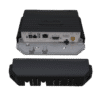

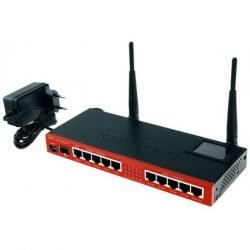








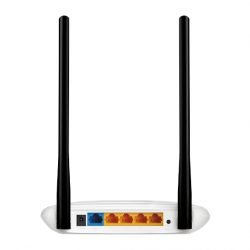

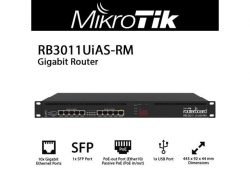

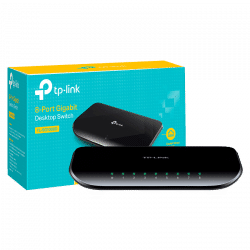


Reviews
There are no reviews yet.